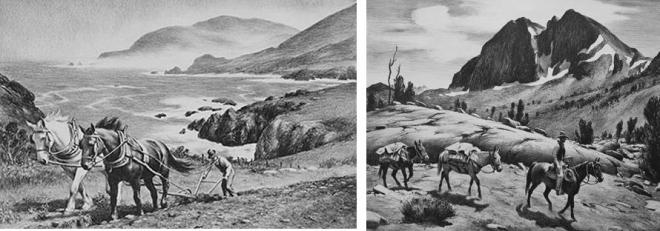An Afternoon at the NH Historical Society Museum

The notorious, brilliant, womanizer, Benjamin Thompson, depicted in a painting with his wife, daughter and slave Dinah. He would soon abandon his American wife. One of the beautiful signs at the New Hampshire Historical Society, was a J. Stickney tavern sign from Concord, NH. The beautiful sign depicts the Indian Grand Sachem King Phillip, also known by his native American name of “Metacom or Metacomet.”
My wife is on a quest to find cheap things to do close to home…and thank God for the Hippo, because it really is the guide to what is happening in New Hampshire. This past Saturday, she took us to Concord for a nice lunch at the Barley House and a trip to a sign exhibit taking place at the New Hampshire Historical Society Museum. The signs were great, but there were many other interesting things on display. My favorite was “White Mountains in the Parlor: The Art of Bringing Nature Indoors,” which included many works by the White Mountain School painters. There were several paintings by Benjamin Champney whose name has become synonymous with the White Mountain art of the nineteenth century. The landscapes of the mountains were sweeping and beautiful. There was also a well attended lecture taking place about how the railroads influenced New Hampshire and the grand hotels of the White Mountains.
One of the oil paintings that fascinated me was “Benjamin Thompson’s Farewell.” by Daniel G. Lamont. What was interesting to me is that it is a rare visible example of how prevalent slavery was in New Hampshire. The caption states “Painted from memory, this paining was commissioned by Sarah Thompson, Countess Rumford, showing her parents Sarah Walker Rolfe Thompson and Benjamin Thompson, in a British army uniform, seated at a table in 1775. A loyalist, Benjamin Thompson is about to leave his family with British military forces evacuating New Hampshire. Sarah Thompson as baby is held by the Thompson’s African-American slave, Dinah, standing in the background…”Little did I comprehend what I didn’t know until I came across the book, “Sex and the Scientist, The Indecent Life of Benjamin Thompson, Count Rumford. (1753-1814) In it we learn more about the importance of Dinah in the life of Sarah Thompson.”
“…This would not be the paternal aunt to whom she went when she was four but a female slave in the household name Dinah, who became Sally’s surrogate mother, spoken of with lifelong affection. And who had fairly exclusive care of her. This a slave nurtured the child and also smoothed over things for her. All her life, being sensitive, Sally had the need to go to someone to perform this same function and give the emotional support the enslaved black woman had provided. By the time Sally had the wistful family portrait painting, in which her mother and father were placed in the foreground and Dinah held her infant self, the America South was sentimentalizing slavery, which fed into Sally’s nostalgia and the artist’s stereotypical plantation mammy depiction so at odds with the parents, who look like cutouts of New Englanders.”
Thompson had met his wife in Concord NH. “Apprenticeships in the importing trade and the study of medicine, too, absorbed much of his young life until at the age of 19 he became a schoolmaster in Concord (earlier called Rumford) N.H. There he met and married a wealthy widow, Mrs. Sarah Rolf, who was also the daughter of Reverend Timothy Walker. In this position of influence, young Thompson met Governor Wentworth of New Hampshire who was impressed enough to name him Major in the 2nd Provincial Regiment.” After this painted scene, Thompson would sail back to England and abandon his wife and child in America. He would eventually reconcile with his daughter Sally (Sarah?).
On Saturday, March 9, 2019 9 a.m. to 4:30 p.m.
Genealogy Workshop: The Scots-Irish in New England.
“Three hundred years ago, in 1719, a group of sixteen Scots-Irish families established a settlement in Nutfield (later Londonderry), N.H. They were part of a wave of Scots-Irish immigration to New England that would bring thousands of people to the New World. In New Hampshire, the Londonderry settlement became a jumping-off point for what was essentially a Scots-Irish invasion in the eighteenth century. Join us for a day-long program with special guest speakers from the Ulster Historical Foundation from Belfast, Ireland, to learn more about the history of the Scots-Irish and conducting genealogical research on Scots-Irish families. Time will also be set aside for Q&A and for some tips on overcoming brick walls in your research. In addition, the Society will present for viewing—for one day only—the Shute Petition, which initiated the Scots-Irish exodus to New England.” Space is limited, and registration is required. The cost is $75 for New Hampshire Historical Society members and $125 for nonmembers. The day we were there new memberships were being offered for $34.99 or half price.

















